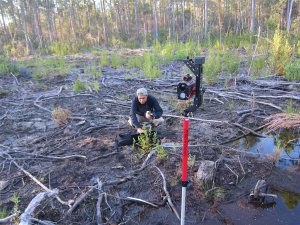The 2020 Atlantic Hurricane season made history as the most active season since official records began in 1851, with a total of 30 named storms, 13 hurricanes and six major hurricanes.
A new University of Florida-led study investigated the long-term effects of hurricanes on forests and implications for forest management. The team, which also includes researchers from Alabama A&M University, the University of Vermont and the Florida Forest Service, found that dense forests with bigger and taller trees, diverse tree species, and greater biomass are especially damaged by the hurricanes, but that diverse forests may recover more quickly.

By utilizing a network of permanent forest plots distributed across Florida and Alabama, the team analyzed how Hurricane Ivan – which made landfall near Gulf Shores, Alabama, in 2004 – affected southern coastal plains forests over a period of 16 years.
This study could help determine better forest management strategies for future resiliency. Managing forest structure through density management and stand improvement, for example, could be critical to enhancing resilience and resistance in the southern U.S. forests. Forest stands with diverse species are not necessarily more windstorm resistant but may be more resilient, meaning they can recover more quickly after the hurricane than less diverse forests.
“The reason for this resilience is that species vary in how much they are damaged by high winds, and also how quickly they respond to the new environment caused by the hurricane,” said Ajay Sharma, who led the research and is an assistant professor of applied forest ecology based at the UF/IFAS West Florida Research and Education Center in Milton. “Though hurricanes can cause widespread damage to forests, the good news is that we found forests nearly recover to pre-hurricane conditions within a decade or two after the hurricane, depending on the amount of damage caused by the initial impact of the storm.”
The southern United States is the nation’s wood basket; the 13 states in this region account for 60% of forest products that create everything from toilet paper to lumber. Windstorms are an increasing threat to forest management and the associated economy and ecology of the southern United States. Previous studies suggest that windstorms (including hurricanes) will increase in intensity and may become more frequent.
Sharma and a co-author of the study, Jason Vogel, are both faculty at the UF/IFAS School of Forest Resources and Conservation and members of ProForest, a multi-institutional collaboration based at UF that has research and extension programs focused on forest health and resilience. Other authors include Santosh Ojha from Alabama A&M University, Luben Dimov from the University of Vermont, and Jarek Nowak from the Florida Forest Service.
 0
0
